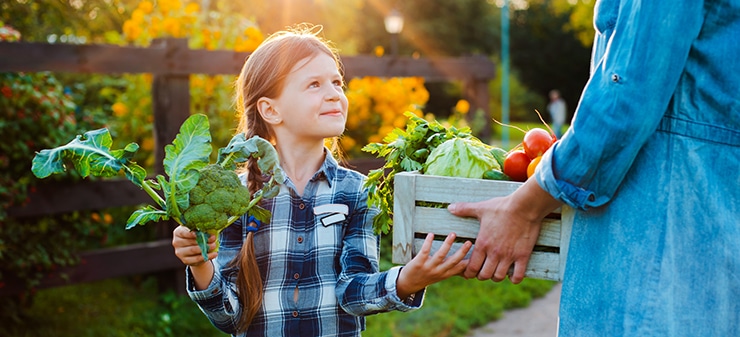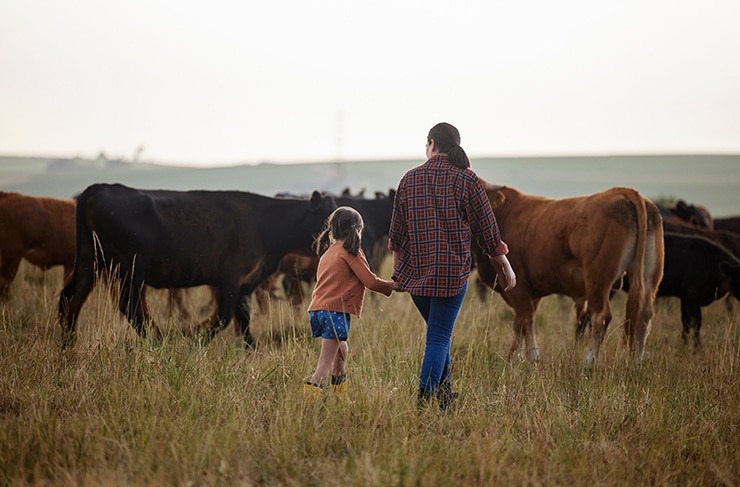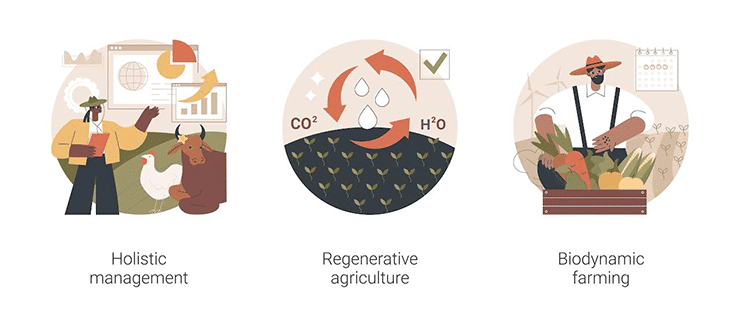
As the air turns crisp and leaves begin to display their vibrant hues, the arrival of fall brings more than just a change in the weather. It marks the culmination of a year’s hard work for farmers as they gather the bounties of their labor, presenting us with an array of fresh, and seasonal produce. In recent times, there has been a growing movement towards establishing meaningful relationships with farmers and making informed choices about our sources of nourishment. This fall, let’s explore the significance of connecting with the harvest season, fostering relationships with local farmers, and understanding where our protein sources originate.
The Fall Harvest and Its Rich Offerings
The fall harvest is a time of abundance and gratitude. Fields are laden with a variety of crops, including pumpkins, apples, squashes, and hearty greens. But farms aren’t often limited to fruits and vegetables; most also offer a vital component of our diet: protein. Knowing where your family’s poultry, meat, and dairy comes from is an important step to shifting people back to supporting the family farm.
Cultivating Relationships with Farmers
In an age where most of our food journeys through complex supply chains, it’s easy to lose touch with the people who grow what we eat. However, there is a value of forming direct relationships with local farmers. Knowing who produces your food, understanding their practices, and appreciating their dedication can deepen your connection to the nourishment on your plate.
I remember when I was studying at Bastyr University, there was a visiting scholar speaking on our connection with food. He had us close our eyes and visualize a grape. Then, he asked us to use our imagination to walk back through all the steps that the grape took to get onto our plate. How many resources and people were needed along with the transportation and supermarkets that helped deliver this one grape to us.
The food we find on supermarket shelves doesn’t just magically appear there. Similarly, protein doesn’t miraculously appear in our kitchens on Styrofoam. In my view, as we become more distant from direct relationships with farmers, we become more open to the idea of incorporating crickets into our diets. Surprisingly, the cricket market is projected to become a 3.5 billion dollar industry by 2029.
Join the Movement
I wholeheartedly support three movements. The first is the Slow Food Movement. The Slow Food Movement was started in Italy in 1989 and is based on these principles:
- GOOD: quality, nourishing food that is full of flavor
- CLEAN: food production that is not harmful to the environment
- FAIR: prices that are affordable for consumers and fair conditions and income for producers
Why embrace the slow food movement?
- Become aware of and reduce the environmental and social impact of food production
- Enjoy seasonal, nourishing food
- Protect our edible biodiversity
If we neglect these measures, we may find ourselves completely locked into monocropping practices. This would entail an escalating reliance on pesticides in an attempt to tackle the proliferation of pesticide-resistant crops. Unfortunately, these crops are already deficient in essential nutrients due to the significant depletion of the soil. We should be focusing on how to support biodiversity and not surrendering to monocropping.
This can be done by focusing on regenerative farming and biodynamic farming.

Regenerative Farming: Restoring and Enhancing Ecosystems
Regenerative farming is an innovative approach to agriculture that focuses on revitalizing and restoring the health of ecosystems while producing food. Unlike conventional farming practices that can deplete soil quality and disrupt natural balances, regenerative farming aims to work in harmony with nature. Farmers implementing regenerative techniques prioritize soil health by using practices like cover cropping, crop rotation, and minimal tillage. These methods help build soil structure, increase water retention, and enhance biodiversity.
By allowing fields to rest and recover, regenerative farming allows native plants and beneficial insects to flourish, reducing the need for synthetic pesticides. This approach not only yields healthier crops but also contributes to carbon sequestration, mitigating the effects of climate change. Ultimately, regenerative farming seeks to create a harmonious ecosystem where agricultural activities support the environment’s well-being, making it a sustainable solution for both food production and conservation.
If you’re interested in learning more, here are documentaries on this subject:
- Kiss the Ground
- Into the Soil
- A Life on Our Planet
- To Which we Belong
- And, my favorite: Sacred Cow

Biodynamic Farming: A Holistic Approach to Agriculture
Biodynamic farming takes a holistic and interconnected approach to agriculture, considering the farm as a self-sustaining organism within the larger ecosystem. Rooted in the ideas of philosopher Rudolf Steiner, biodynamic farming goes beyond organic practices to incorporate spiritual and metaphysical principles. This method involves the use of specially prepared biodynamic composts and sprays that utilize natural materials and energy forces to enhance soil fertility and plant vitality.
Biodynamic farmers also follow a planting calendar that takes into account lunar and cosmic rhythms, aiming to optimize plant growth and health. Furthermore, the farm is viewed as a closed-loop system where animals, crops, and compost are intricately linked. Livestock play a vital role by providing manure for compost, and diverse crops help maintain ecological balance. Biodynamic farming seeks to create a farm that is not only productive but also spiritually attuned to the cycles of nature, fostering a deep sense of interconnectedness between the land, plants, animals, and humans.
The documentary Kiss the Ground also offers an in-depth view on Biodynamic Farming.
If you live in the Pacific Northwest, there’s an amazing Biodynamic Farm called Jubilee Farms in Carnation. I’ve participated in their CSA in the past and purchased both cow and pig shares. Although the farm is over 30 minutes from my home, I happily made the journey there once a week to collect my goodies. There’s beauty in the valley and being on the farm really slows my pace down. They also have a huge pumpkin crop with a lot of fall activities.
Bridging the Gap: Organizations Linking People and Farmers
Community Supported Agriculture (CSA) takes the farm-to-table concept to a whole new level. By becoming a CSA member, you invest in a local farm’s season, sharing both its risks and rewards. As the seasons progress, you receive a weekly share of the farm’s yield, which can include a diverse range of produce such as vegetables, fruits, herbs, and even eggs. This system benefits farmers by providing them with upfront capital to support their operations and, in turn, allows consumers to enjoy fresh, locally grown products. Beyond the economic exchange, CSA fosters a sense of partnership, offering a deeper understanding of the challenges and triumphs faced by farmers.
To find CSA’s in your state, simply do a quick search online. If you live in Washington State, you may search for local CSA opportunities here: www.EatLocalFirst.org
Can’t Make it to the Farm? Let Moink Bring the Farm to You!
I receive a monthly box full of steaks, pork chops, roasts, hamburger meat and whole chicken, all of which is raised ethically and organically. Everything that Moink offers is direct from small family farms. Without Moink, these farms would lack the supply chain to deliver product consistently. With Moink, these farms know that they can raise and sell their products, and this keeps them in business.
Moink operates on the philosophy of “Know Your Farmer, Know Your Food.” As a Moink customer, I can customize my monthly box, choosing from an assortment of humanely raised, grass-fed, and wild-caught options (yes, they have fish too). I can also skip a month, whenever you like. By connecting consumers with farmers, Moink encourages a shift from impersonal, large-scale production to a more conscious and accountable approach.
They are trying to protect family farming and I’m happy to support them. This is a great option if you don’t have farms in your area, you have less freezer space (hard to participate in a half or quarter cow share if you don’t have a separate storage freezer) and if you simply want to support family farms. You can really taste the difference.
Check them out here: https://sibo.guru/moink
A Holistic Approach to Fall Eating
Embracing the fall harvest goes beyond the culinary experience; it’s about understanding the ecosystem that sustains us. By choosing locally sourced products, you support the local economy, reduce your carbon footprint, and contribute to the preservation of farmland. The fall harvest embodies the cycle of life, reminding us of the interconnectedness between the land, the farmers, and the food we consume.
Engaging with the harvest, building connections with farmers, and consciously choosing our protein sources can transform our eating habits into a meaningful and empowering journey. Through platforms like Moink and the CSA movement, we have the chance to not only savor the flavors of the season but also nurture a more sustainable and responsible food culture. So, this fall, let’s raise our forks with gratitude for the harvest and appreciation for those who bring it to our tables.
Enjoying this content? Sign up for updates... It's FREE!


